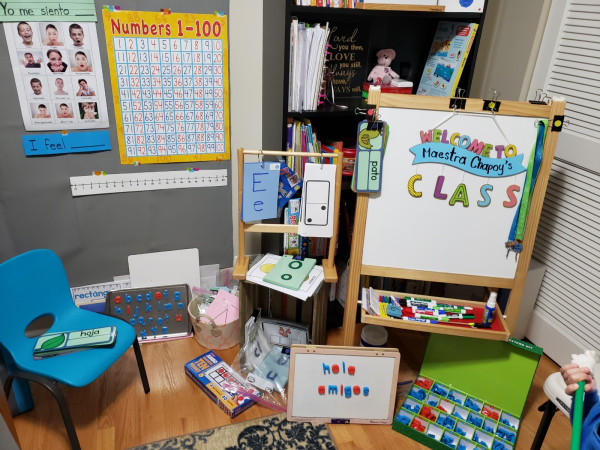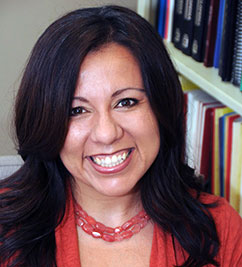Education on the Home Front: How to Keep Young Children Learning in the Early Days of COVID-19
March 20, 2020 | By Janet L. Kelly, WCER Communications

Many families are taking a crash course in living, learning and working together at home as a result of the COVID-19 virus.
With 40 U.S. states now closing public schools to slow the spread of the COVID-19 virus, parents have had little to no time to plan for keeping their children at home 24/7. Suddenly, and in some cases overnight, families are figuring out how to live, learn and work—together and separately—all under one roof.
Many parents who haven’t yet heard from their children’s schools about alternatives to classroom instruction may be wondering if they also need to take on the role of an at-home substitute teacher.
Tips for Learning and Working at Home
For families with young children, UW-Madison educator and family engagement researcher Lorena Mancilla has some advice on how to create spaces and establish routines for learning and working effectively from home:

Over a weekend, a mom who was teaching kindergarten just last week used her professional experience and creativity to turn a corner in the family's home into a bright and welcoming learning area for her 5-year-old son.
- Set up separate spots in the home, as space permits, for children to learn and parents to work.
- Keep the family’s regular weekday schedule for waking up, bedtime and meals.
- Gather resources for children to engage with, such as toys, games, books, online videos and drawing materials.
- Schedule frequent breaks for kids and parents to move around, play and exercise.
- Expect the unexpected.
Mancilla says start slowly with daily goals. For example, select a one-hour learning activity for day one, a two-hour activity on day two, and so on. But what activities?
A Web of Resources
"Many wonderful online resources geared to helping children learn at home have started popping up," says Mancilla, who recommends a free booklet just made available through WIDA Early Years, the program she directs as part of the multilanguage learning organization WIDA, housed at the Wisconsin Center for Education Research in UW--Madison's School of Education.
"The booklet, 'Learning Language Every Day: Activities for Families,' is available free online in English and Español to help children keep learning at home during the COVID-19 outbreak," she says, noting that anyone can downloaded the booklet for printing and sharing.
"And just in the past few weeks, the popular children’s book author Mo Willems has begun a daily, livestreamed, lunchtime doodling session for kids available on YouTube.” Likewise, the author of the “Pete the Cat” series, James Dean, is hosting live virtual storytimes on Instagram, also during lunchtime.
Other online sources to check are websites for:
- Public television stations, U.S. Department of Education, state education agencies, school districts, home schooling networks.
- Organizations such as Scholastic Learn at Home, We Are Teachers Online Resources and Family Activities.
- Support for multilingual families and children such as Colorín Colorado (bilingual), Mono Sílabo (Spanish Language).
No Internet? Turn to Hands-On Learning
But for homes without internet access, Mancilla -- whose work focuses on young multilingual children -- recommends that parents tap into the expertise that family members use every day in and around the home.

Lorena Mancilla, an expert in multilingual learning, directs WIDA's Early Years.
She says many everyday activities in the home provide authentic and hands-on learning opportunities for young children, including:
- Cooking and its use of numbers and math for measuring ingredients and setting cooking times.
- Food for learning about nutrition and where different foods grow in the world.
- Gardening with opportunities to learn about growing vegetables and the life cycle and needs of plants.
- Repairing a household item or object and explaining how it works, as well as the tools and steps needed to fix it.
Mancilla suggests families prioritize their safety and well-being over the coming weeks while recognizing it takes time to adapt to learning and working at home effectively.
"Parents were not given much time to prepare for their children to learn at home and they should not be expected to teach academic subjects for six hours a day," states Mancilla. She wants families to know that they can choose from a variety of ways to keep their children engaged and support learning at home.
"It is important for parents to begin by asking themselves, ‘What can I do to build on our knowledge and create a learning environment at home that works well for the whole family?'”


